- Home
- Isaac Asimov
Robot City 1 & 2 Page 3
Robot City 1 & 2 Read online
Page 3
"Hello?" Derec called. There was no answer.
The door facing him was labeled WARDROOM. Inside, he found a table large enough to seat eight for a meeting or a meal, a compact autogalley, and a sophisticated computer terminal and communications center.
Derec ran his fingertips across the surface of the table, and they came away clean, without even a coating of dust. The status lights on the galley told him that the unit was in Extended Standby, which meant that its food stores had been irradiated and deep-frozen. No one had eaten here for some time.
Was it all for him? Was that why it was unused? Or was he a surprise visitor in an empty house?
He switched the galley to Demand status, and a timer began counting down the two hours it would take to bring it on line. But when he tried to activate the com center, it demanded a password.
"Derec," he offered.
INVALID PASSWORD, the screen advised him.
He had only the most infinitesimal chance of guessing a truly random password. His only chance was if a lazy systems engineer had left one of the classic wild-card passwords in the security database. "Test," he suggested.
INVALID PASSWORD.
"Password," Derec said.
INVALID PASSWORD. ACCESS DENIED.
From that point on, the center ignored him. The silent-entry keypad was disabled, and nothing he said evoked any response. Apparently the center had not only rejected his passwords, but blacklisted him as well. The systems engineer had not been lazy.
Returning to the corridor, Derec briefly checked the other two rooms. One was another cabin, mirror-image to the one in which he had woken up. The other, labeled MECHANICAL, contained several racks of lockers and what appeared to be maintenance modules for environmental subsystems. Both rooms were as tidy and deserted as everything else Derec had seen since waking.
That left only the airlock and the mysteries beyond it to explore. The inner door bore the sonograph-in-a-circle emblem which meant VoiceCommand. "Open," he said, and the inner door of the hatch cracked open with the ripping sound of adhesion seals separating.Derec stepped into the tiny enclosure and the door closed behind him. Peering through the window of the outer door, Derec could see no reason why the airlock was even there. The corridor beyond looked little different than the one he was leaving. "Cycle," he said.
The inner door closed behind him, the momentary surge of pressure on his eardrums telling him it had sealed. "Warning. There is a reduced-pressure nitrogen atmosphere beyond this point," the hatch advised him. "Please select a breather."
"Nitrogen?"
Only then did Derec notice the small delivery door in the side wall. Inside he found several gogglelike masks made of gray plastic. Selecting one, he saw that the mask was meant to fit over the middle third of his face, like a pair of wraparound sunglasses that had slipped down his nose. The breather's "straps" were hollow elastic tubes that met behind his neck. Aflexible gas delivery tube led from there to the cartridge pack, which was small enough to strap to the upper arm.
When he put the breather on, however, he could not make the bottom edge of the mask seal against his upper lip to keep out the outside air. With the gap, the breaths he drew would be a mixture of free nitrogen and oxygen from the breather.
Belatedly, Derec realized that that was intentional. It was an arrangement that not only reduced the size of the cartridge pack, but also left his sense of smell unimpeded. A clever bit of engineering, with a minimalist flavor.
"Ready," Derec said.
"Warning: reduced gravity beyond this point," the hatch advised him.
"I hear you," he said as the outer door began to open. Nitrogen? Low-G? he wondered as he stepped out. Where am I? What's going on?
There were no immediate answers. It wascold--cold enough to bring a flush of color to his cheeks. The chill seemed to radiate equally from the ceiling and floor, though they were both made of an insulating synthetic mesh.
Standing there just outside the pressure hatch, Derec could hear a cacophony of machine noises--hissing, rumbling, grinding, squealing. But the drop in pressure, which distended his eardrums, made it seem as though he were trying to hear through a pillow. Aside from the fact that there was activity somewhere, he got nothing useful out of what he heard. He could not tell what kinds of machines he was hearing, or what they were doing.
Determined to follow the sounds to their source, he started down the corridor--or tried to. He ended up flat on his face on the cold decking, uninjured but chastened. Collecting himself, he tried again, this time pulling himself along the corridor by the center handrail.Thirty meters ahead, the corridor opened into an enormous low-ceilinged chamber. Derec gaped as he took in its dimensions. It suggested armories, playing arenas, open-plan factories. He forced a yawn and swallowed hard, and the pressure in his left ear equalized. Yes, those were definitely machine noises. But what kind of machines, doing what kind of work?
Between the cold and low gravity, Derec concluded that he was still on the asteroid where his lifepod had crashed. From the structure of the chamber, he concluded that he was most probably underground.
More important, he was not alone. There were robots moving among the stacks and aisles--dozens of them, of a half-dozen varieties. But in another sense, he was alone, for there were no other people. There were not even any handrails in the aisles to make the chamber human-accessible. The chamberbelonged to the robots by default. What task they were so busily attending to, he could not divine.
The nearest of the robots, a squat boxlike unit with a single telescoping arm, was only a few dozen meters from Derec. As Derec watched, it plucked a fist-sized component from a rack, stowed it in a cargo basket, and retracted its manipulator arm. Its mission apparently accomplished, the robot started away, coasting on a cushion of air from under its venturi skirt.
"Stop!" Derec called out.
But the robot continued on, seemingly deaf to Derec's command. On impulse, Derec released the handrail and went in pursuit. But in the asteroid's minimal gravity field, it was like trying to run with both legs asleep. He was perpetually off-balance, his slippered feet failing to give him the traction he expected. When he came to his first ninety-degree turn, hewent sprawling, scattering a rack of small chromium cylinders.
Not even the racket from his spill slowed the robot's retreat. It continued on toward what appeared to be a lift shaft--a circular black pit in the floor and a matching one in the ceiling, linked by four chrome guide rods.
"How am I supposed to catch you?" he complained, climbing to his feet. "I can't fly."
There had to be a better way, and looking more closely at two robots heading down the aisle toward him, Derec saw what it was. Unlike the picker, the man-sized robots were built on standard three-point ball-drive chassis--like three marbles under a bottle cap. Ball-drive chassis were standard in clean environments because they offered complete freedom of movement. The drawback: here, with the reduced friction due to the low gravity, the drive balls should do more spinning than pushing.But each large robot had a second ball-drive chassis mounted at the top of a telescoping rod. Pushing against the ceiling, the second chassis provided the necessary pressure for the dual drives to grab. Like the bumper cars at a revival carnival, each robot needed to be in constant contact with both surfaces to operate.
Derec realized that he could use that trick, too. The ceiling was low enough that he could push against it with his fingertips while standing flat-footed. "Hand-walking," as he dubbed the technique, he could have caught the picker.
Now he waited to see what the two approaching robots would do about him. They stopped short of where he stood and began to restore order where he had fallen down, deftly using their three-fingered grapples to replace the cylinders on the shelving. He waited, wondering if they would notice him. They did not.
"I'm in danger," he called to them. "I need your help."The two robots continued their housekeeping, apparently oblivious to his presence. He drew closer and examined the nearer of
the two as it worked. It had normal audio sensors, but no evidence of a vocalizer. In short, it was mute. It could not answer.
But there had to be some higher-level robots in the complex, ones capable of recognizing him for what he was and responding to his needs. The pickers and custodians he'd crossed paths with could hardly be working without supervision.
Likewise, the E-cell he awoke in couldn't be the only structure for humans within the complex. Somewhere there was a management team, programmers, supervisors. There was no such thing as a completely autonomous robot community.
Thinking that there had to be a way to call the control room from the E-cell, Derec started back. As he did, he saw a sight that broughthim up short. A tall humanoid robot was standing at the end of the corridor to the E-cell, studying him.
They stared at each other for a long moment. The robot's skin was a gleaming pale blue, a vivid declaration of its machine nature. Its optical sensors were silver slits in its helmet-like head, lacking the customary red tracking marker which telegraphed when the robot was looking in your direction. Even so, there was no doubt in Derec's mind that he was the object of the robot's rapt and unnaturally focused attention.
The robot was the first to move, turning away and disappearing into the corridor, hand-walking with easy coordination. Derec followed as quickly as he was able, but by the time he reached the corridor, the robot was already inside the airlock. It took no more than fifteen seconds for Derec to reach the outer hatch and pass through into the E-cell. Even so, when hestepped out into the inner corridor, the robot was already emerging from the wardroom, its business apparently finished.
"I'm in danger," Derec said. "I need your help."
"False assessment: you are not now in danger," the humanoid robot said. "Should you be in danger, help will be provided."
The robot took one step toward the pressure hatch, and Derec moved to place himself in its path.
"I'm not letting you leave here until you tell me where I am and what I'm doing here," Derec said sharply.
The robot's answer was nonverbal but perfectly clear. Stepping closer, it grasped his shoulders firmly but gently and moved him out of the way. Then it walked with smooth strides past him to the hatch.
"Open," it said.
Feeling helpless, Derec let the robot go, thenturned to see if he could discover what it had been doing in the wardroom. Only two things had changed since Derec had left. The galley was still counting down to full Demand status, but the selector was now showing a short list of selections that were already available. Derec himself had set that change in motion.
It was the other change that the robot was responsible for. The screen of the com center was no longer blank. In bright red letters, it reported: MESSAGE TRANSMITTED.
It was then that Derec knew for certain that he was alone on the asteroid. The fact that there was an environmental cell deep under the surface implied that there had once been at least a temporary human presence here. But this little world was in the hands of the robots now, and he was a trespasser. What message they had sent about him, and to whom they had sent that message, there was no telling.
CHAPTER 3
THE ROBOTS' MISSION
Derec took the time for a meal, which he needed, and a shower, which he did not. But the shower provided him with something to do while thinking, and he had a lot to think about. His presence, his identity, the cause and reason for his memory impairment were as troublesome as ever. And after his excursion, he had a new mystery. Why were the robots behaving so strangely?
Derec asked himself under what circumstances a robot might refuse to answer his question, which amounted to refusing to obey his orders. Within his understanding of theLaws of Robotics, Derec could think of only two, both illustrated by his experience with Darla: because it did not know the answers, or because it had been instructed previously not to reveal them.
Precedence did count for something with robots. A robot ordered by its owner to service a flyer would not leave that job to search for a neighbor child's missing cat--unless it was the owner, not the child, who made the request. A carefully worded command would hold up against anything but a counterorder rooted in a First Law situation. If the robots had been told not to talk about what they were doing, nothing Derec could do would make them disobey.
Before he dressed, he searched his body for clues to who he was. He found no scars large enough that he would expect to remember when and how he acquired them. He bore no tattoos or skin ornaments, wore no rings or jewelry.The only distinctive mark he seemed to bear was inside, in the things that he knew. Somewhere, sometime, he had received advanced training in microelectronics. He had more than a passing understanding of robotics and computers. Was that commonplace, a standard curriculum for someone his age? He thought not. And if not, it might be the trail that he could follow to rediscover himself.
The com center was continuing its intransigence, still ignoring his input, still mockingly displaying the words MESSAGE TRANSMITTED. But there was one door that hadn't yet been slammed in his face. Donning a breather and a spare cartridge pack, Derec left the E-cell to explore the rest of the complex.
Derec began by creating a mental map of the great chamber, assigning arbitrary compass points with the E-cell as his reference for south. The chamber seemed to be roughly rectangularrectangular, longer north to south than east to west by a factor of two or more. He started hand-walking northward down the same corridor the custodian robots had used, counting his paces as he went.
Five hundred paces later, his arms were tired and the north wall seemed no closer. Stopping to rest, he surveyed the robot population of the chamber. He tallied seventeen of the humanoid robots, none of which were nearby. Among the nonhumanoid robots, he identified five different types: the pickers, the custodians, a large cargo handler Derec dubbed a porter, some multi-armed micro-assemblers, and an armored robot with oversized grapples whose function he could not guess.
Most of the robots he encountered were moving purposefully through the aisles, carrying out their assignments. But toward the north end of the chamber, Derec spotted a small army of robots standing inert and deenergized, waiting to be called into action. All the varieties were represented among the reserves except for the humanoid robots.
The robot stockpile was Derec's clue to understanding where he was. The chamber seemed to be primarily a collection of spare parts. True, he had spotted a cluster of injection and extrusion machines in one area, a battery of laser welders in another, a chip-burning shop in a third, all apparently in full-time use. But all those operations were apparently maintenance related.
Whatever they're doing here, they're on a very heavy duty cycle--possibly even continuous operations, he told himself. Zero down-time could only be bought with a large-scale repair and maintenance operation. And that high price was only worth paying when time mattered more than money.
There was a steady stream of robot traffic on the lifts located at intervals through the chamberchamber, and the obvious next step was to find out where they were going. Giving up his plan to walk the length of the chamber, Derec headed for the nearest lift.
Like the breather, the lifts were clearly the product of a unique approach to engineering. To Derec, they looked like something either unfinished or nonfunctional. They were also more proof that the complex had been designed with robots alone in mind. No human would have ridden one voluntarily.
The shaft was a vertical boring three meters in diameter, its sides lined with the same synthemesh as the chamber ceiling. Peering out over the edge and down, Derec glimpsed a deep shaft lit at regular intervals by stationary blue glows, which he assumed marked other levels. The shaft seemed to extend much farther down than up. Above the great chamber--which he had begun to think of as the warehouse--he counted only seven levels, whilebelow it he could see at least twenty levels before the traffic in the shaft obscured what might lie beyond.
A descending lift platform on the nearest guide rod obliged D
erec to duck back out of the way. The platform, a square grid a meter on a side, reached the floor level and stopped as though waiting for him.
While it waited there, traffic kept moving on the other three guide rods. Watching the robots board and disembark, Derec saw that while the lift was in operation, the robots were clamped to the platforms magnetically. He wondered how he would be able to keep his balance and footing without that assistance. There were no railings to grab on to, and the guide rod itself appeared to be electrically live.
Personal considerations aside, he could not help but admire the engineering aesthetics of the lift. It was a clean and focused solution to the problem of moving the maximum amountof traffic in the minimum time and space, a solution fully integrated with the requirements of the colony.
But clever as the system was, Derec was not eager for a ride in the dark on an open platform above a seemingly bottomless pit. Still, it was that or go back to the E-cell. He swallowed hard once and stepped carefully out onto the waiting platform.
"Up," he said.
"Level, please?"
"Uh--Level Two."
Singing a high-pitched song, the car began to climb swiftly. He stood with his arms crossed over his chest and his legs spread wide. Keeping his vision focused upward toward the nearest of the blue glows, he tried not to look at the shaft walls sliding swiftly by.
The platform flashed through several other levels before gradually slowing to let him off. The glimpses he caught of them prepared himfor what awaited him on Two. When he stepped off the lift, he was standing at the crossroads of two low-ceilinged tunnels, each six meters wide. The walls, floor and ceiling were covered with the ubiquitous off-white synthemesh. The air was colder than ever, cold enough to make him hunch his shoulders and bury his hands under his arms.
Though the immediate vicinity of the lift was brightly lit by the blue floodlights, the tunnels themselves were illuminated only by dim yellow lamps set at intervals in the ceiling. Each was barely bright enough to mark its own position and make a tiny pool of yellow light on the floor of the tunnel.

 The Return of the Black Widowers
The Return of the Black Widowers The Stars, Like Dust
The Stars, Like Dust Foundation
Foundation David Starr Space Ranger
David Starr Space Ranger I, Robot
I, Robot Puzzles of the Black Widowers
Puzzles of the Black Widowers Casebook of the Black Widowers
Casebook of the Black Widowers The Ugly Little Boy
The Ugly Little Boy Azazel
Azazel Pebble in the Sky
Pebble in the Sky Foundation and Empire
Foundation and Empire The Complete Robot
The Complete Robot Fantastic Voyage
Fantastic Voyage Foundation and Earth
Foundation and Earth The Naked Sun
The Naked Sun The Currents of Space
The Currents of Space Foundation's Edge
Foundation's Edge The Robots of Dawn
The Robots of Dawn Nightfall
Nightfall The Caves of Steel
The Caves of Steel Prelude to Foundation
Prelude to Foundation Nemesis
Nemesis Robot Dreams
Robot Dreams More Tales of the Black Widowers
More Tales of the Black Widowers The Complete Stories
The Complete Stories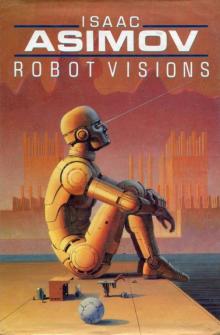 Robot Visions
Robot Visions Lucky Starr And The Moons of Jupiter
Lucky Starr And The Moons of Jupiter Lucky Starr and the Big Sun of Mercury
Lucky Starr and the Big Sun of Mercury The End of Eternity
The End of Eternity The Bicentennial Man and Other Stories
The Bicentennial Man and Other Stories Lucky Starr And The Rings Of Saturn
Lucky Starr And The Rings Of Saturn Buy Jupiter and Other Stories
Buy Jupiter and Other Stories Forward the Foundation
Forward the Foundation Lucky Starr and the Oceans of Venus
Lucky Starr and the Oceans of Venus The Positronic Man
The Positronic Man The Portable Star
The Portable Star Asimovs Mysteries
Asimovs Mysteries Earth Is Room Enough
Earth Is Room Enough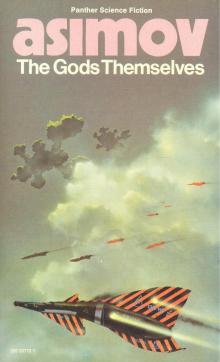 The Gods Themselves
The Gods Themselves Youth
Youth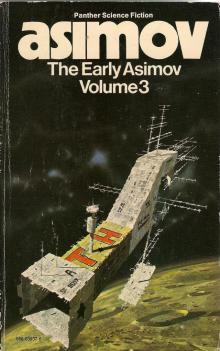 The Early Asimov Volume 3
The Early Asimov Volume 3 The Winds of Change and Other Stories
The Winds of Change and Other Stories Of Time, Space, and Other Things
Of Time, Space, and Other Things Nine Tomorrows
Nine Tomorrows Time Warps
Time Warps Robots and Empire
Robots and Empire Young Star Travelers
Young Star Travelers Fantastic Voyage II: Destination Brain
Fantastic Voyage II: Destination Brain Second Foundation
Second Foundation The Rest of the Robots
The Rest of the Robots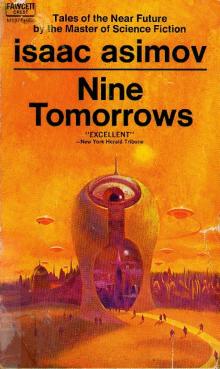 NINE TOMORROWS Tales of the Near Future
NINE TOMORROWS Tales of the Near Future Daneel Olivaw 1 - The Caves of Steel
Daneel Olivaw 1 - The Caves of Steel THE BICENTENNIAL MAN
THE BICENTENNIAL MAN David Starr Space Ranger (lucky starr)
David Starr Space Ranger (lucky starr)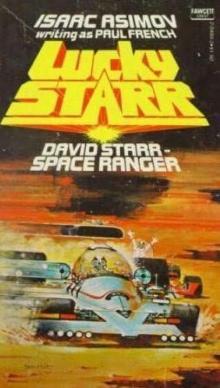 David Starr Space Ranger (ls)
David Starr Space Ranger (ls) Lucky Starr And The Big Sun Of Mercury ls-4
Lucky Starr And The Big Sun Of Mercury ls-4 Pebble In The Sky te-1
Pebble In The Sky te-1 Asimov’s Future History Volume 9
Asimov’s Future History Volume 9 Gold: The Final Science Fiction Collection
Gold: The Final Science Fiction Collection Foundation and Earth f-7
Foundation and Earth f-7 Asimov's New Guide to Science
Asimov's New Guide to Science STORM OVER WARLOCK
STORM OVER WARLOCK Stars, Like Dust
Stars, Like Dust Norby The Mixed-Up Robot
Norby The Mixed-Up Robot Found!
Found! Asimov’s Future History Volume 11
Asimov’s Future History Volume 11 Second Foundation f-5
Second Foundation f-5 Asimov’s Future History Volume 15
Asimov’s Future History Volume 15 The Early Asimov. Volume 1
The Early Asimov. Volume 1 Secound Foundation
Secound Foundation Daneel Olivaw 3 - The Robots of Dawn
Daneel Olivaw 3 - The Robots of Dawn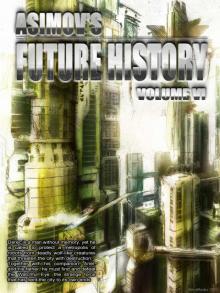 Asimov’s Future History Volume 6
Asimov’s Future History Volume 6 The Early Asimov. Volume 2
The Early Asimov. Volume 2 Lucky Starr And The Rings Of Saturn ls-6
Lucky Starr And The Rings Of Saturn ls-6 100 Malicious Little Mysteries
100 Malicious Little Mysteries Forward the Foundation f-2
Forward the Foundation f-2 I.Asimov: A Memoir
I.Asimov: A Memoir Foundation's Edge f-6
Foundation's Edge f-6 Lucky Starr and the Pirates of the Asteroids ls-2
Lucky Starr and the Pirates of the Asteroids ls-2 Robot City 1 & 2
Robot City 1 & 2 The Fourth Science Fiction Megapack
The Fourth Science Fiction Megapack Asimov’s Future History Volume 16
Asimov’s Future History Volume 16 The Dim Rumble
The Dim Rumble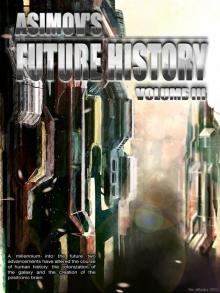 Asimov's Future History Volume 3
Asimov's Future History Volume 3 The Currents Of Space te-3
The Currents Of Space te-3 Asimov’s Guide To Shakespear. Volume 1
Asimov’s Guide To Shakespear. Volume 1 Asimov’s Future History Volume 13
Asimov’s Future History Volume 13 Asimov’s Future History Volume 12
Asimov’s Future History Volume 12 The Secret Sense
The Secret Sense Of Time and Space and Other Things
Of Time and Space and Other Things Norby tnc-2
Norby tnc-2 Norby The Mixed-Up Robot tnc-1
Norby The Mixed-Up Robot tnc-1 Misbegotten Missionary
Misbegotten Missionary Asimov’s Future History Volume 19
Asimov’s Future History Volume 19 Fantastic Voyage II: Destination Brain fv-2
Fantastic Voyage II: Destination Brain fv-2 Asimov’s Future History Volume 10
Asimov’s Future History Volume 10 Asimov's Future History Volume 2
Asimov's Future History Volume 2 Feeling of Power
Feeling of Power In the Beginning
In the Beginning The Caves of Steel trs-1
The Caves of Steel trs-1 Asimov's Future History Vol 2
Asimov's Future History Vol 2 Caliban c-1
Caliban c-1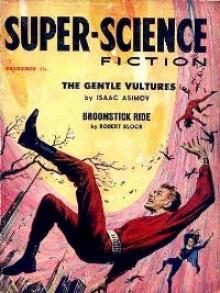 The Gentle Vultures
The Gentle Vultures Utopia c-3
Utopia c-3 Prelude to Foundation f-1
Prelude to Foundation f-1 Short Stories Vol.1
Short Stories Vol.1 Asimov’s Future History Volume 8
Asimov’s Future History Volume 8 Daneel Olivaw 4 - Robots and Empire
Daneel Olivaw 4 - Robots and Empire Lucky Starr The And The Moons of Jupiter ls-5
Lucky Starr The And The Moons of Jupiter ls-5 Gold
Gold Asimov’s Future History Volume 4
Asimov’s Future History Volume 4 Foundation and Empire f-4
Foundation and Empire f-4 Potential
Potential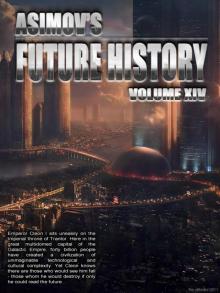 Asimov’s Future History Volume 14
Asimov’s Future History Volume 14 Asimov’s Future History Volume 7
Asimov’s Future History Volume 7 Daneel Olivaw 2 - The Naked Sun
Daneel Olivaw 2 - The Naked Sun Lucky Starr and the Pirates of the Asteroids
Lucky Starr and the Pirates of the Asteroids Foundation f-3
Foundation f-3 All the Troubles of the World
All the Troubles of the World Cleon the Emperor
Cleon the Emperor Asimov's Future History Volume 5
Asimov's Future History Volume 5 Asimov’s Future History Volume 20
Asimov’s Future History Volume 20 Robots and Empire trs-4
Robots and Empire trs-4 Profession
Profession It's Been a Good Life
It's Been a Good Life The Robots of Dawn trs-3
The Robots of Dawn trs-3 Lucky Starr And The Oceanf Of Venus ls-3
Lucky Starr And The Oceanf Of Venus ls-3 The Naked Sun trs-2
The Naked Sun trs-2 Asimov's Future History Volume 1
Asimov's Future History Volume 1